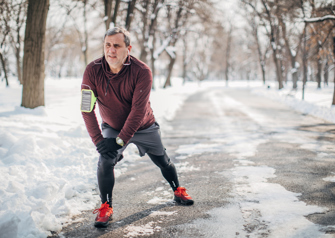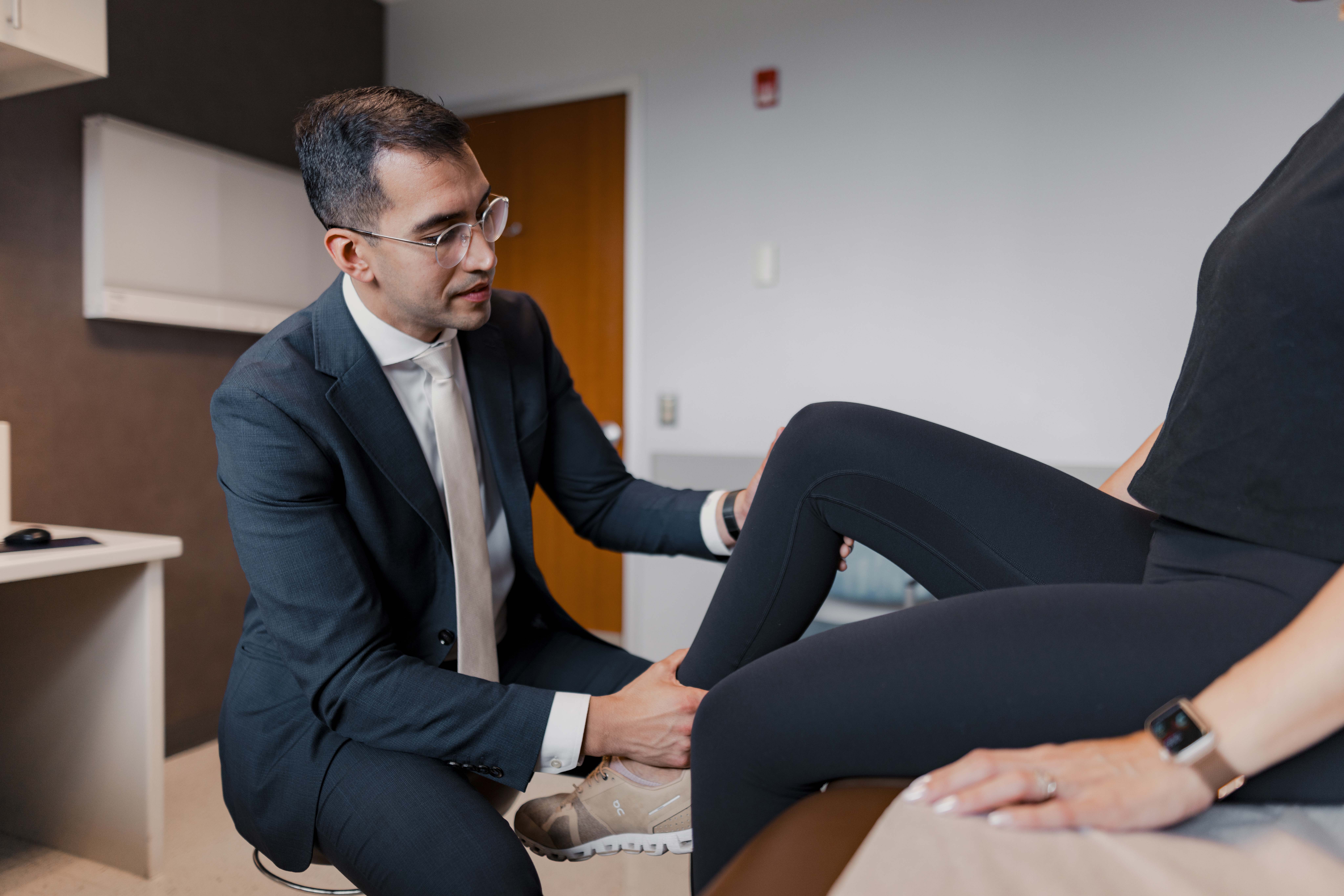
News
Staying Motivated and Safe When Working Out During Winter Months
Date posted: 3/3/2020
Last updated: 3/3/2020
Table of Contents
March 3, 2020
By: Dr. Joshua Blomgren
It’s easy to want to stay inside during these winter months in Chicago. It’s cold, snowy and dark, and that makes curling up on the couch more appealing than getting up and exercising.
As the motivation and ambition to work out may be lacking, it can help to use the prospect of better weather as motivation. Consider the winter work out as prep for more comfortable workouts as the nicer weather returns. Most exercise events happen in the summer months, so you can use this time to focus on building up towards these future events. So, how can you stay motivated and safe during your workouts in those winter months?
Make sure you dress properly if you are going to run outside
You never know what the weather will be like in Chicago, but it will most likely be cold, so make sure you bundle up to keep yourself warm. It’s always a good idea to wear bright colors, dress in layers, keep hydrated and make sure you are visible. The main thing is to keep a close eye on your body and watch for hypothermia or frostbite.
Look for winter-friendly activities
Sometimes it’s just too cold and snowy for you to exercise outside like you normally would in those summer months. But that doesn’t mean there aren’t other options for you. Winter activities that involve physical activity are a good option: skiing, snowshoeing, and hiking are a few good options that challenge you physically and are excellent ways to continue to work out safely during the winter months. Moving the workouts indoors is always and option. Continuing the runs on a treadmill, hopping on an exercise bike, or taking a group class can be ways to move it indoors and keep it interesting. This is also a good time to focus on a cross-training program to build a good foundation of balanced strength in anticipation of the opportunity to do more as the weather turns.
Sign up for a future event as a challenge
Set a goal of a future event or race as a means of motivation to stay consistent with the winter program.
Take part in active warm-ups
It’s important to gradually warm up your muscles before working out to prevent injury. This becomes increasingly important in the cold weather as it can take longer for the muscles to warm up. Actively warming up with some movement such as lunges, jumping jacks, and some dynamic stretching indoors can be helpful.
Don’t neglect your cool down
Stretching post-workout is crucial, but even more important after a cold-weather workout. Make sure to give your body time to cool down and stretch. You don’t want to go from a heart-pumping, sweat-drenched workout straight into the freezing cold. Muscles are more pliable when they are warm and are best stretched in a warmer environment.
Protect your head and hands
Wearing a hat in cold weather not only protects your head and ears from the cold but it helps reduce radiant heat loss from the body which aids in temperature regulation. Your hands and feet are particularly vulnerable to frost bite, so it is particularly important to protect the hands and feet with warm gloves and socks. Wind and water-resistant layers can further protect and keep the cold out.
Hydrate
You might think that you sweat less because it is cold, but you still need to drink just as much water as in the warmer months. Dehydration increases your risk of injury and will slow down your performance. Drink room temperature water before, during and after your workout.
Choose the right shoes
If you are someone who wants to continue to run outdoors in the cold, make sure that you wear something that will provide additional traction to protect against slip and fall. Choose footwear that is resistant to wind and water to help keep the winter elements away from your feet and toes.
Dr. Joshua Blomgren is board certified by the American Board of Family Medicine and board certified in Sports Medicine. He is currently one of the co-team physicians for the Chicago White Sox and Associate Medical Officer for the Chicago Fire Soccer Club. His practice provides osteopathic manipulation, joint and musculoskeletal injections, fracture care, concussion management, compartment pressure testing, sports dermatology and sports physicals.


